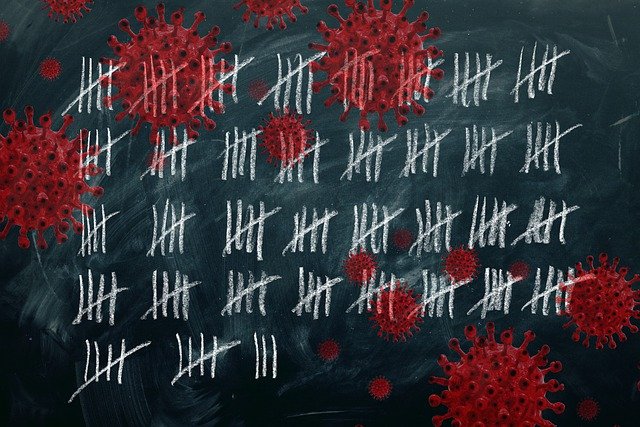The new study could explain repeated outbreaks in countries that won the coronavirus, the authors of the work believe.
The new coronavirus persists on surfaces for up to 28 days, a new study showed. Smartphones and banknotes are especially dangerous. The authors believe this may explain why the epidemic is returning after a long lull.
How long does the coronavirus live?
SARS-CoV-2 lasts up to four weeks on surfaces, experts from the Australian Disease Preparedness Center warn. The results of the study are published in the Virology Journal.
Researchers applied particles of the virus to different surfaces and monitored how long it would remain viable.
It turned out that on glass including smartphone screens, vinyl, stainless steel and banknotes (both paper and made of polymer materials), the virus can survive up to 28 days at a temperature of 20 degrees Celsius.
When the air is heated to 30 degrees Celsius, the virus survived on smooth surfaces for up to three weeks, and at 40 degrees it died in a few days. At the same time, porous surfaces, for example, fabrics, turned out to be less dangerous than smooth ones.
The greatest danger, according to scientists, are smartphone screens, since people do not have the habit of regularly disinfecting them.
Previous research has shown that the coronavirus can survive up to four days on non-porous surfaces.
Trevor Drew, head of the Australian Center for Disease Preparedness, said the study consisted of drying samples of the virus on various materials before testing them in an “extremely delicate” method.
According to him, this made it possible to detect traces of a live virus capable of infecting cell cultures.
However, the scientist emphasizes that it remains unknown whether the surviving virus will be able to lead to human infection.
“Meanwhile, if you touch infectious materials and then touch the eyes or nose, it is possible to become infected more than two weeks after these surfaces have been contaminated,” he said.
It is worth noting that the study created ideal conditions, such as no light, and the level of particles matched the likely peak of infection.
In this study, the humidity was maintained at 50 per cent because the increase in humidity also adversely affects the virus, according to the Australian researchers.
“This may help explain why, even when there are no more infectious people, it happens that (the epidemic) returns, although the country is considered virus-free,” the head of the research center said.
However, former director of the Center for the Study of the Common Cold at Cardiff University, Professor Ron Eccles, said the Australian study “instils unreasonable fear in people.”
“Viruses get to surfaces from dirty fingers and droplets of mucus when coughing and sneezing, and in this study, fresh mucus as a mechanism for the spread of the virus was not considered,” as mentioned by BBC News.
The professor explains that such fresh mucus is a hostile environment for viruses, as it contains many white cells that produce enzymes that destroy viruses and may also contain antibodies and other agents that can destroy the infection.
“Therefore, from my point of view, infectious viruses contained in mucus on surfaces can live for hours, but not days,” he stressed.
University of California professor of medicine Monica Gandhi said last week in an interview with Nautilus magazine that the coronavirus is not transmitted through surfaces.
According to her, the main cause of infection is not touching the face with dirty hands, but the contact at an unsafe distance with the carrier of the virus, the particles of which fly out of the nose and mouth.
Be that as it may, experts point out that no one has denied the golden rule of constant hand washing, but to this, we must add the need to wipe the screens of smartphones more often.
The fact is that it is known for sure that some bacteria, including E. coli and Staphylococcus aureus, sometimes remain viable on the surfaces of inanimate objects for several months.
While this study reminds us once again of the importance of washing our hands, it should not change the way we survive the pandemic. The main mode of transmission of the infection is by oral route and drops, and although the virus can be spread through people who touch infected surfaces and then touch their face, it can be easily removed with a disinfectant with 70% of alcohol.
So the researchers stress that this new finding shouldn’t be cause for panic. The scientists’ advice remains the same and includes wearing a mask, staying away from large gatherings, washing your hands regularly and cleaning surfaces.
